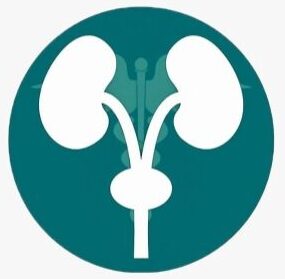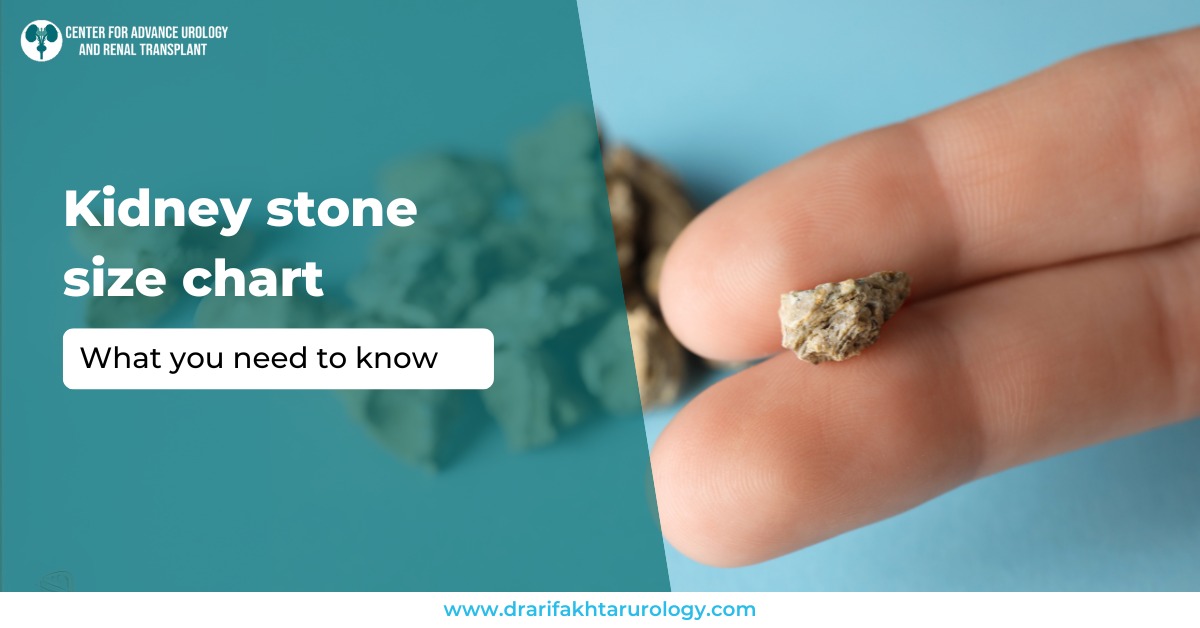Kidney stones are small, hard deposits that form in the kidneys and can cause significant discomfort. Their size plays a crucial role in determining whether they will pass naturally or require medical intervention. Understanding the kidney stone size chart can help you evaluate your condition and explore appropriate kidney stone removal options.
Understanding Kidney Stone Size and Treatment
The size of a kidney stone is usually measured in millimeters (mm). Smaller stones often pass on their own, while larger stones may require medical intervention.
Small vs. Large Kidney Stones
– Less than 4 mm:
These small kidney stones have a high chance of passing naturally, often with minimal discomfort. Doctors recommend staying hydrated and using pain management techniques.
– 4 mm to 6 mm:
Stones in this range have a lower chance of passing naturally. Medications like alpha-blockers may be prescribed to help relax the urinary tract.
– Over 6 mm:
Larger stones usually require medical procedures such as shock wave lithotripsy, ureteroscopy, or surgery.
In some cases, dietary modifications, including reducing sodium and oxalate-rich foods, may help prevent further stone formation. Increasing calcium intake from natural sources, like dairy products, can also reduce oxalate absorption and lower the risk of stone development.
Kidney Stone Measurement in mm and Pain Levels
Size directly impacts the level of pain a person experiences. While even a small kidney stone can cause excruciating pain, larger ones can block the urinary tract, increasing discomfort and the risk of complications. Kidney stone pain levels can vary based on location, size, and individual pain tolerance.
Pain can sometimes be misleading. Even a 2 mm stone, if lodged in the wrong spot, can be just as painful as a 6 mm one. The location of the stone matters more than just the size. When pain becomes unbearable or is accompanied by fever and nausea, immediate medical attention is needed.
Can Kidney Stones Pass Naturally?
If you have a stone smaller than 5 mm, there’s a good chance it will pass on its own. Staying well-hydrated and using pain relievers can help facilitate the process. However, if a stone becomes stuck in the urinary tract, medical intervention may be required.
Drinking citrus-based fluids like lemon water can help break down small kidney stones naturally by reducing the buildup of calcium and oxalate. Additionally, regular physical activity, such as walking, can help facilitate stone movement through the urinary tract, making passage easier.
Kidney Stone Surgery Options
For stones that do not pass naturally, various treatment methods are available:
– Shock Wave Lithotripsy (SWL): High-energy sound waves break the stone into smaller fragments, making it easier to pass.
– Ureteroscopy (rigid/ flexible ??? : A small scope is inserted into the urinary tract to remove or break the stone.– Percutaneous Nephrolithotomy (PCNL): A minimally invasive surgery used for large stones that cannot be treated with other methods.
New advancements in laser technology have improved the effectiveness of stone removal. Laser lithotripsy, performed through ureteroscopy, has shown a high success rate with minimal recovery time. Furthermore, robotic-assisted surgery is being explored for complex kidney stone cases, offering precision and better outcomes.
Kidney Stone Diagnosis and Imaging
To determine the size and location of a kidney stone, doctors use imaging tests such as:
– X-rays: Basic imaging to detect larger stones.
– CT scans: The most accurate method to identify stones of all sizes.
– Ultrasound: A radiation-free option, often used for pregnant women or those with recurring stones.
Recent studies suggest that low-dose CT scans can effectively detect kidney stones while minimizing radiation exposure. Additionally, some specialists are using dual-energy CT scans to better differentiate between stone compositions, aiding in personalized treatment plans.
How Big Can a Kidney Stone Get?
While most stones remain under 10 mm, some can grow much larger. Kidney stones over 20 mm may require advanced surgical techniques for removal.
Rarely, “staghorn” kidney stones can develop, filling a significant portion of the kidney and requiring complex surgical removal. These large stones often form due to recurrent urinary tract infections and must be treated promptly to prevent kidney damage.
Prevention of Kidney Stones
Prevention is key when dealing with kidney stones. While treatment options exist, lifestyle changes can significantly reduce the likelihood of stone formation.
Increase Water Intake: Drinking at least 2-3 liters of water daily keeps urine diluted and flushes out minerals before they can form stones.
Reduce Salt and Animal Protein: High sodium and protein intake increase calcium excretion, leading to stone formation.
Eat Calcium-Rich Foods: Contrary to common belief, dietary calcium helps bind oxalates in the intestines, reducing kidney stone risk.
Limit Oxalate-Rich Foods: Foods like spinach, beets, and chocolate can contribute to stone formation. Moderation is key.
Monitor Vitamin C Supplements: Excessive vitamin C intake may increase oxalate production, raising the risk of kidney stones.
Conclusion
Understanding kidney stone size and treatment options is essential for managing your condition. Whether you are dealing with a small vs. large kidney stone, knowing when to seek medical help can prevent complications. If you suspect a stone, consult a doctor for proper kidney stone diagnosis and imaging, and explore the best kidney stone removal options for your situation.




